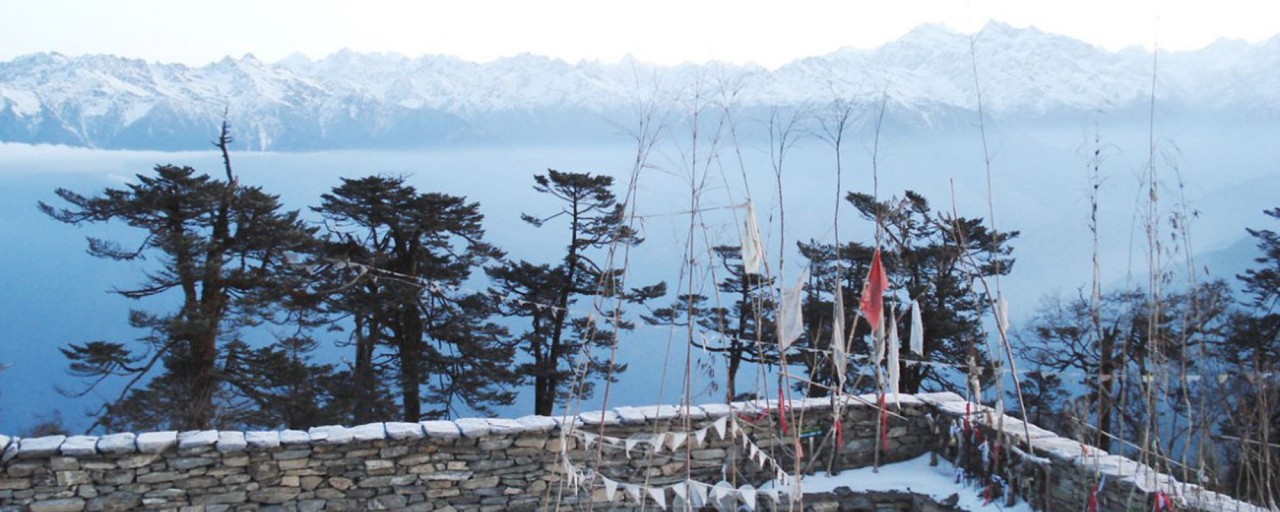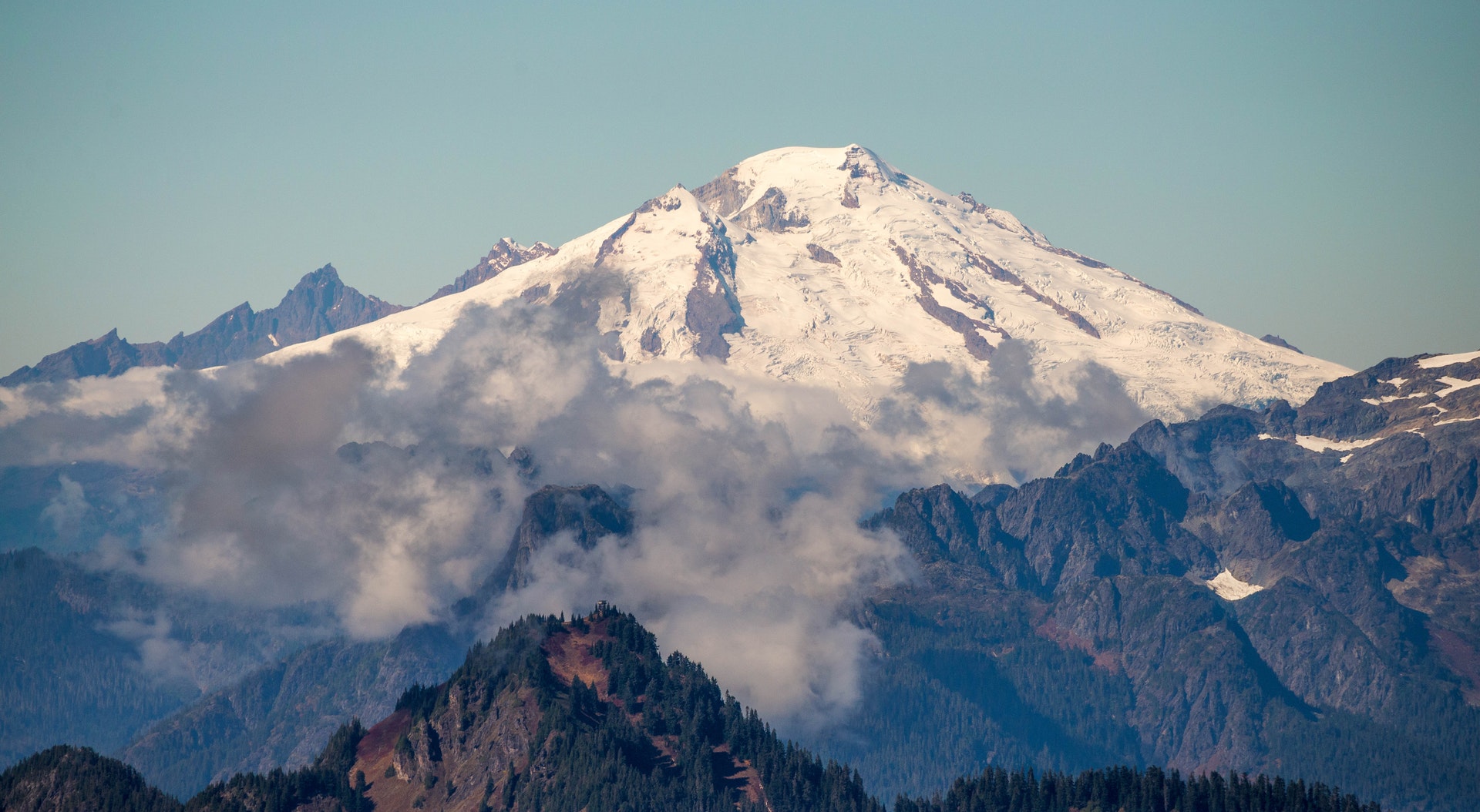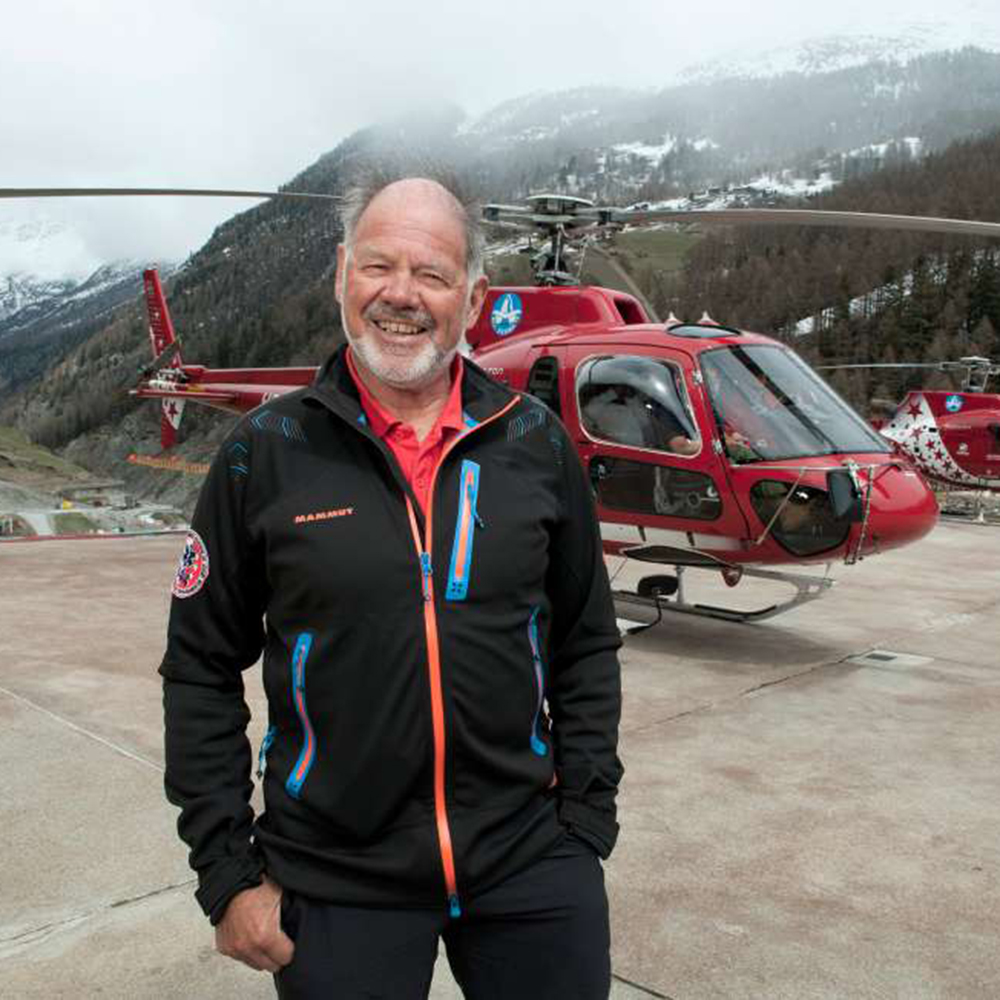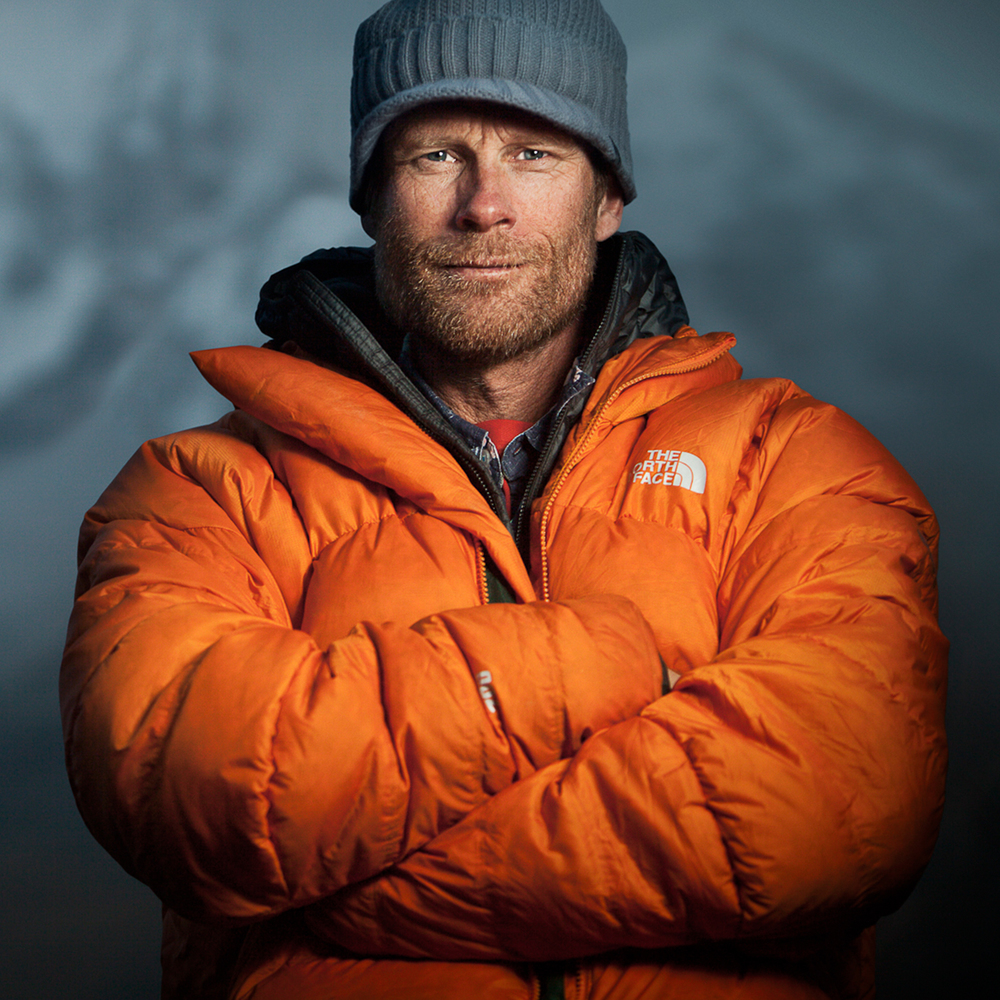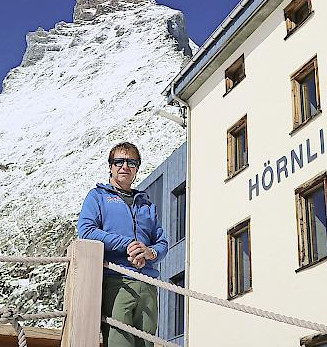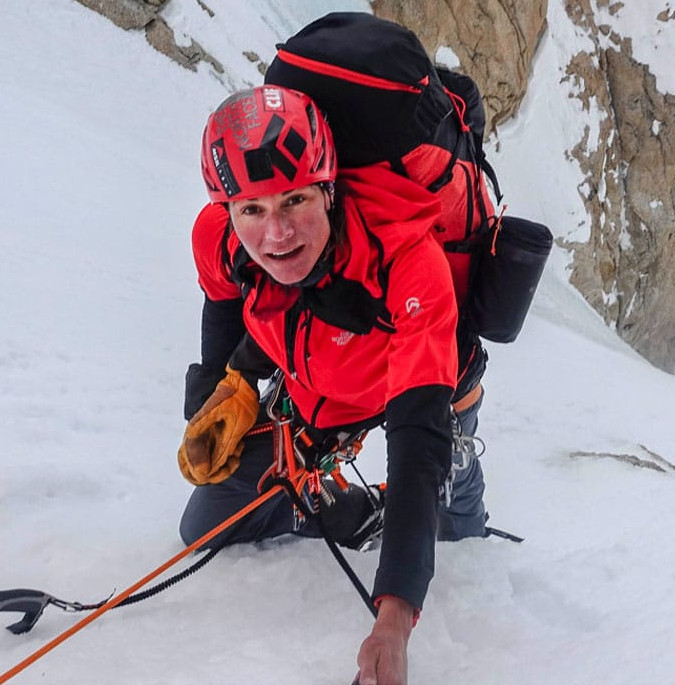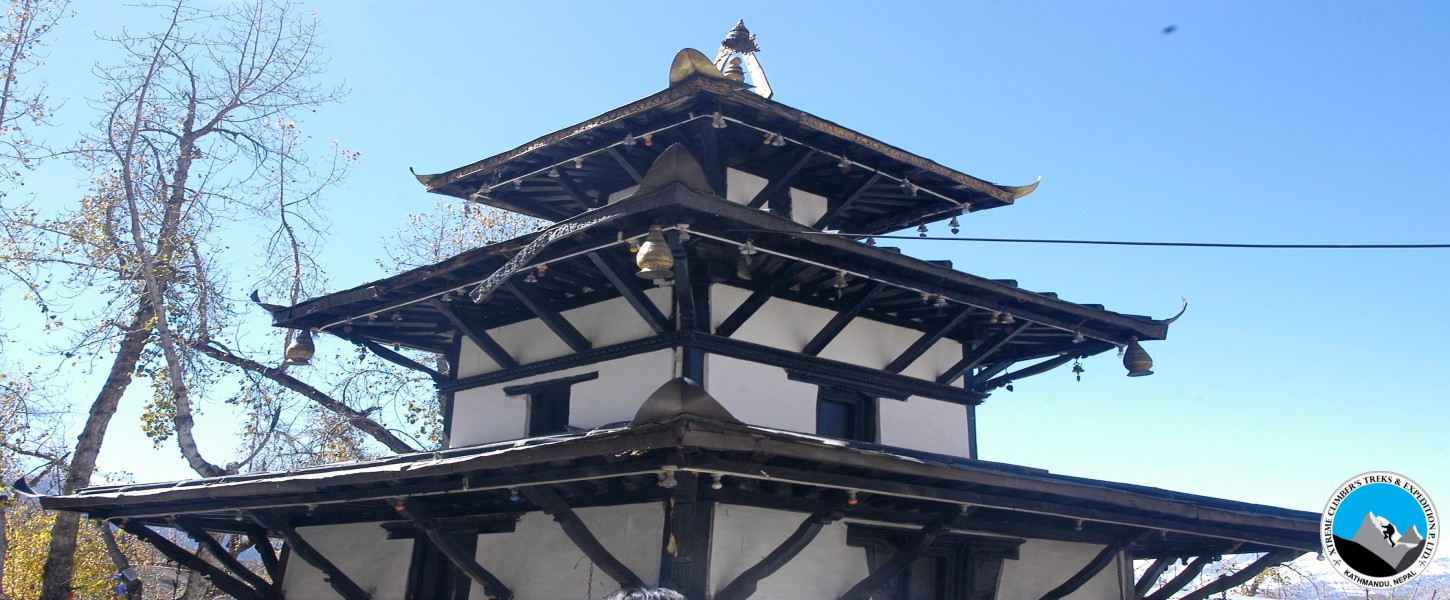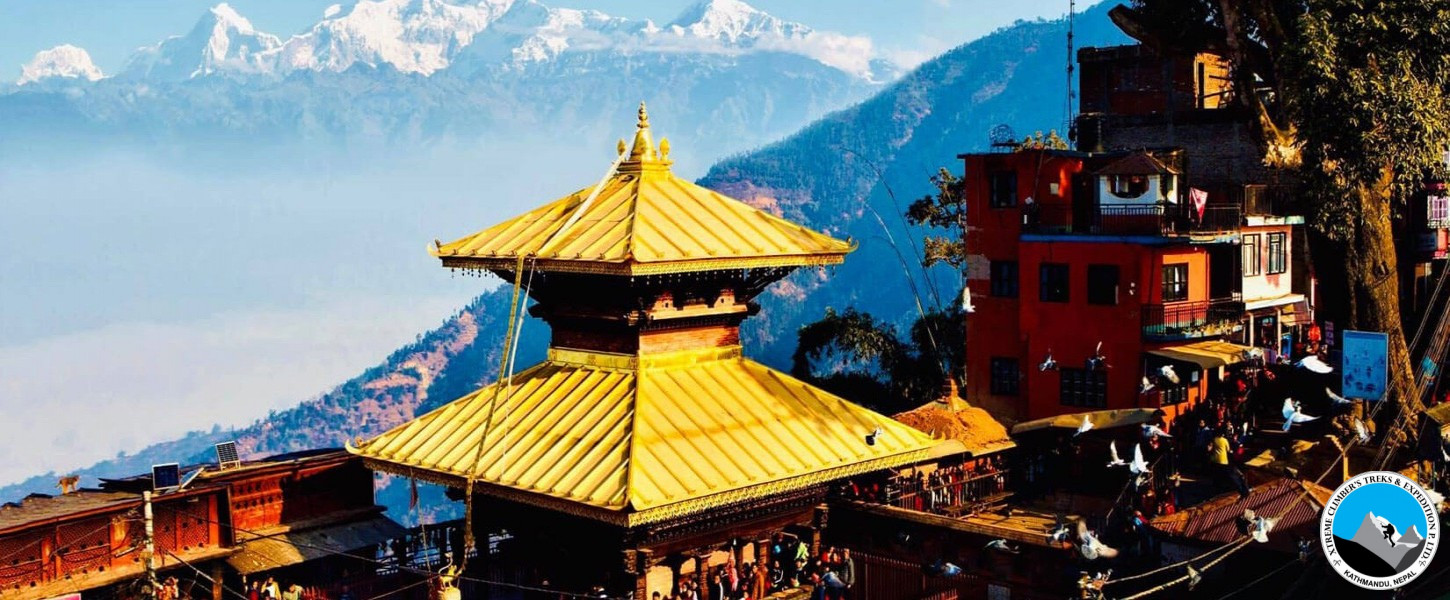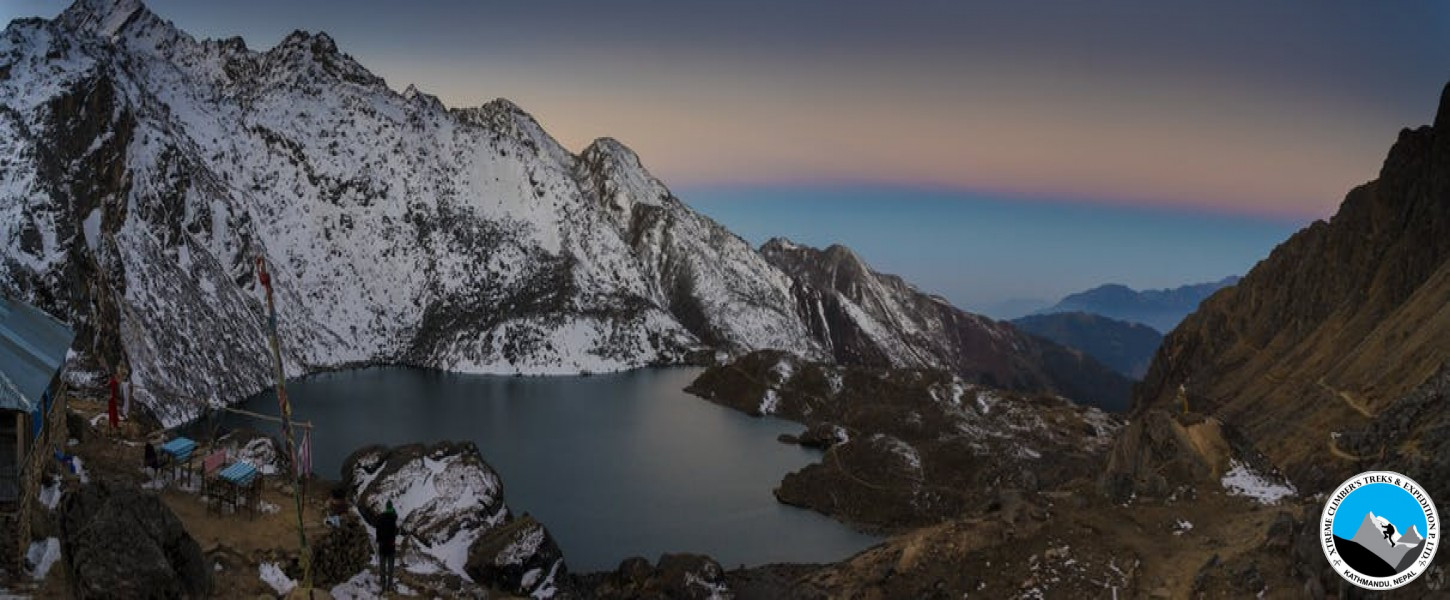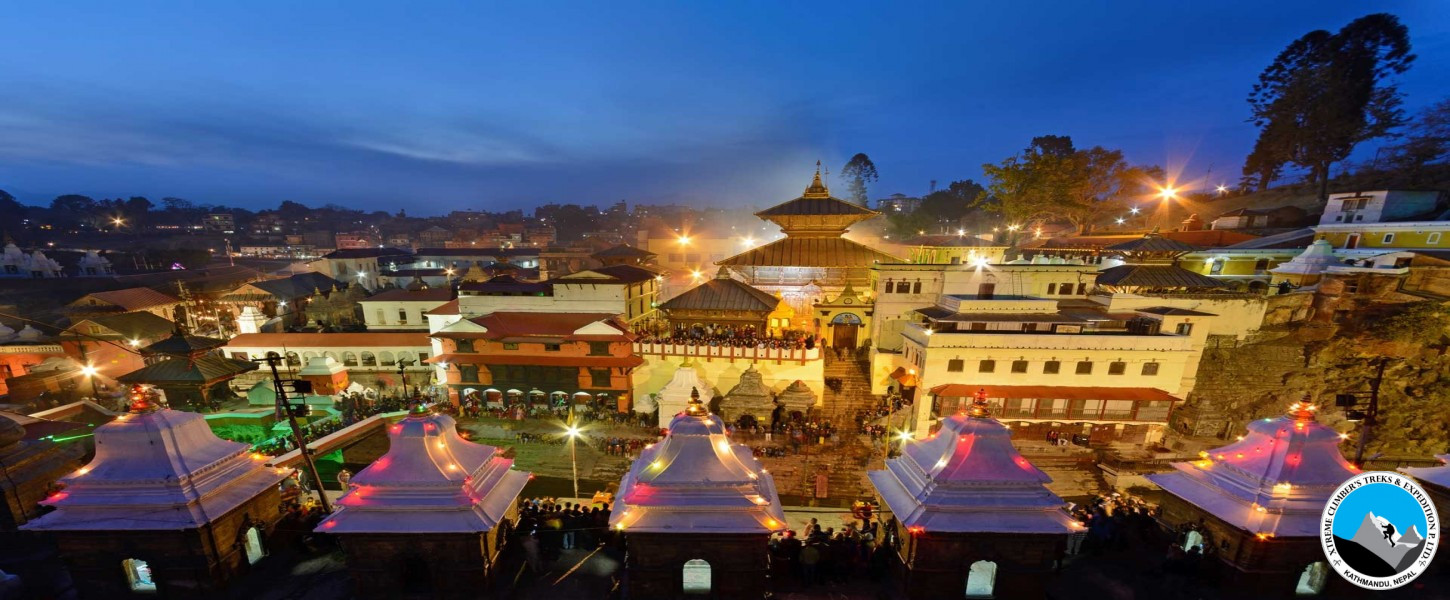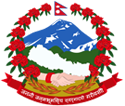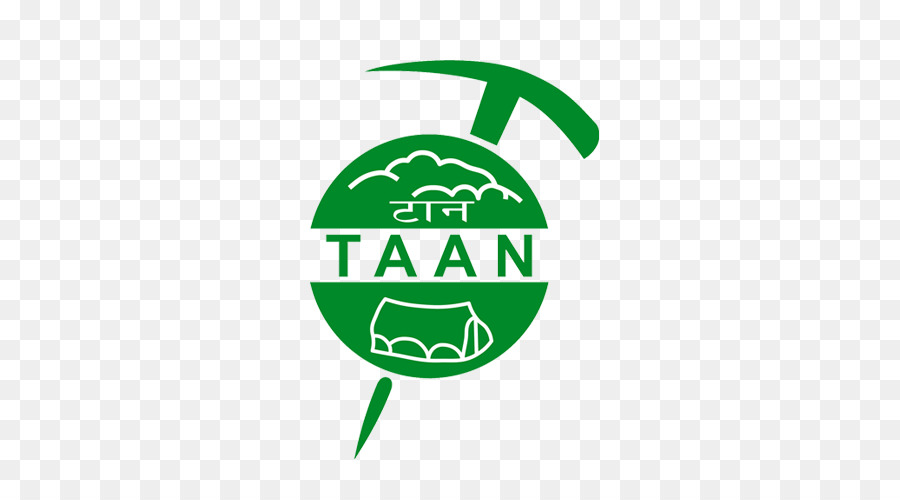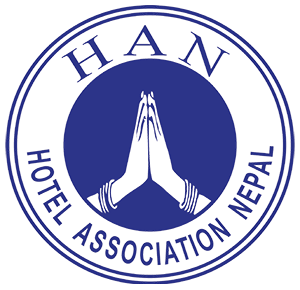Pathibhara Devi or Mukkumlung is one of the most significant temples in Nepal, Considered as one of the holy places for the Limbu people located on the hill of Taplejung at elevation of 3,794 m (12,448 ft). Worshipped with equal reverence by both Buddhist and Hindu religious. The Goddess at Pathivara shrine believed to fulfill the long-cherished dreams of her devotees. like sons for those without sons, and wealth for the poor. Pathivara Devi is considered one of the 'Shakti peethas'. Worshippers from different parts of Nepal and India flock the temple during special occasions, as it is believed that a pilgrimage to the temple ensures fulfillment of all that the pilgrim desires. The devotees of Pathibhara also include members of the Royal family from Nepal. The pilgrims sacrifice animals and bring gold and silver as offerings to the Pathibhara Devi.
The journey to Pathibhara starts from Suketar (2840m) which takes about 2-hours walk to reach from Phungling Bazaar. Pathibhara Devi is about 8-10 hours from Suketar. The airport at Suketar is the only airport of Taplejung district. Suketar is connected to Kathmandu and Biratnagar by scheduled flights. Beautiful views of Kanchenjunga and Kumbhakarna can be seen from Suketar. From Suketar the trail passes through Deurali, Chhatedunga, Bhalugauda, Phedi and finally to Pathibhara.
From March through out to June and September to November are the best months to visit the temple. Pilgrimages can also have an opportunity to have the amazing view of the Kanchenjunga range or visit the waterfall at Sawa pokhari and the pond of Timbuk, during autumn and spring every year. The thick forest Eco-System along the trail offers diversity of wildlife, birds, flowers and butterflies. The local people here are the Limbus, with the higher regions inhabited by people of Tibeto-Mongoloid ancestry. Sherpas, Rais, Gurungs, Magars, Newars, Sunwars, and Tamangs also live in this area, while the area also offers cultural diversity of Chhetris and Brahmins. The trail offers food and lodging facilities. Basic accommodation facilities are also available for pilgrims near the shrine.
Download Pdf
-
Any season
-
Kathmandu (Capital of Nepal)
-
Helicopter : AS 350 B3E (H125)
- Capacity : 1 pilot + 6 Passengers
- Max takeoff weight : 2250 kg
- Power Plant : 1 Turbomeca Arriel 2D
- Service Sling : 23000 Ft
- Rate of Climb : 1818 fpm
- Cruising Speed : 137 knots
- Call Sign: 9N – AKP & 9N AKG
-
Day 1 : Arrive at Tribhuvan International Airport (KTM) Kathmandu
-
Day 2 : Am breakfast drive from kathmandu to Birtamod 11 hours Drive O/n hotel.
Meal Includes: Breakfast Lunch Dinner
-
Day 3 : Early breakfast drive from Birtamod to Taplejung by bus 11 hours of O/n hotel.
Meal Includes: Breakfast Lunch Dinner
-
Day 4 : After Breakfast, walk up to the Suketar (2-3 hrs walk). Visit the surroundings and local lifestyle along the trail walk further to the Deurali O/n hotel.
Meal Includes: Breakfast Lunch Dinner
-
Day 5 : After breakfast walk up to Phedi. (4 hrs walk). Enjoying the Scenic view of snow capped mountains along the way and Bird watching. O/n in Phedi.
Meal Includes: Breakfast Lunch Dinner
-
Day 6 : Phedi to Pathivara Devi Darshan. Enjoying the Scenic view of snow capped mountains along the way and Bird watching along the way we will reach top of Pathivara for Darshan and Puja after that we will Walk back to Phedi. 2 hrs. O/N in Phedi.
Meal Includes: Breakfast Lunch Dinner
-
Day 7 : Walk from Phedi to Suketar. Visit the local monastery. You can have a local food. 4-5 hrs. O/n at Suketar (Lodges/tea-shops).
Meal Includes: Breakfast Lunch Dinner
-
Day 8 : Fly directly to Kathmandu. We will fly back From Suketar or via Biratnagar. 1 hr (more fly via Biratnagar). And transfer to Hotel O/n hotels.
Meal Includes: Breakfast Dinner
-
Day 9 : Departure day from Kathmandu (12,64m). Today your trip comes at the end. After breakfast at your hotel, you now have free time . If it is the day that you fly back home/ onward travel destination, we will transfer you to the airport on time. Or you could extend your stay or you may get our assistance for additional activities that you are interested in. Meal includes:Breakfast
Note: The above itinerary can be tailor made as per client's request, we can make the itinerary shorter/Longer by cutting or adding days, People who have longer time can add the White Water Rafting, Jungle safari tour in Chitwan National park, Paragliding and Zeep Flyer in Pokhara and other extra activities so feel free to write us on info@xtremeclimbers.com for further details.How to book a trip ?
- Religiously Important Place
- Drive Kathmandu to Birtamod and Birtamod to Taplejung
- Domestic flight back from Suketar or via Biratnagar. 1 hr (more fly via Biratnagar).
- Highest Point 3,794 m (12,448 ft)
- Bird Watching
- Scenic view of snow capped mountains
- Cool Weather
- Diversified Flora & Fauna
- Safe Roads
Full Board Service Includes
- Airport / Hotel / Airport pick up & drop by private car or van. It depends of the group.
- 2 nights accommodation in 3 star category hotel in Kathmandu.
- Required necessary land or Air transport as per itinerary
- Meals on full board (Breakfast, lunch and dinner) during trekking.
- Local fresh fruits like oranges, apples, bananas and grapes etc.
- All accommodations during the trek.
- Trekking map
- Required necessary trekking permits
- An experienced Government licensed holder guide and porter to carry your luggage during the trek.
- Food, drinks, accommodation, insurance, salary, equipment, transportation, local tax for Guide and porter
- Group medical supplies (first aid kit will be available).
- Thuraya SAT Phone (Emergency use only)
- Radio Walkie Talkie
- All necessary Government paper works and national park entry permits and TIMS Card etc.
- Travel & Rescue arrangement.
- All government taxes and Vat.
Cost and payment details
The cost is depending on group size, affected due to the requirement of number of guides and porters, requisite of Hotel in Kathmandu, method of land/air transport. The itinerary is changeable and modifiable as per needs and time frame of trekkers. Cost will be re calculated if the itinerary is changed or modified. Additional activities may be added as per trekkers request with appropriate additional cost. For Total Tour cost EMAIL US, we will send you within 24 hours as your requirements.
Why we dont't include cost in our website?
NOTE: To provide you service in reasonable cost and attempt to address your each requirement Xtreme Climbers desired to provide you with some information which directly affects the cost and also helps us breakdown the cost. That is why we have decided to clarify our customers that due to the following reasons mentioned below we have not included the cost of each package in the company website.
-
Climbing season: The climbing permit royalty cost for mountain will be different during Spring and Autumn season. Normally most of the climbers climbs Himalayas in the Spring season. Climbing permit during Autumn will be 50% less than the spring season.
-
The cost of the trip depends on Number of persons joining in group for High expedition or Mountain Climbing including number of climbers, non-climber, base camp supporters, medical doctors, The number of climbing Sherpa guides, high altitude porters, kitchen crew, mode of transport you prefer and many other factors can affect the cost of the trip. Alpine climbing guide as well as the category of the hotel accommodation and the facilities that you aspire in the mountains affect the cost.
-
We operate the High Expeditions, Peak Climbing in full arrangement package and basic arrangement service (full board or base camp service) which directly affects the expedition cost.
-
Request numbers of oxygen, mask regulators and the brands the clients require
-
The itinerary may be changed after reaching an understanding between the agency and the client. Other activities could be added or reduced as per the client's request before processing the trip. Price for reduced activities could be deducted and additional activities could be added in mutual understanding.
-
Either you want to operate this expedition as international group joining basics of Xtreme Climbers or individual (private arrangement) expedition.
-
Type of high camp food that clients require. Any specialized food that has to be ordered from foreign countries will be costlier compared to the one available here.
-
Either any of the climbers intend to attempt any world records? If so, do they require special services or equipment?
Due to the reasons mentioned above we would like to discuss with our client directly before offering the cost. So please feel free to drop your queries in info@xtremeclimbers.com or login to www.xtremeclimbers.com for any information about your selected package.
Full Board Service Excludes
- Meals yourself Kathmandu (L+D).
- Your Travel insurance.
- International airfare.
- Nepal entry visa ( You can obtain a visa easily upon your arrival at Nepal’s Airport in Kathmandu).
- All kinds of drinks (Alcoholic, Special Coffee,cold drinks etc.)
- Personal shopping and laundry etc.
- Personal trekking Equipments.
- Tips for trekking staff and driver. (Tipping is expected, but it is not mandatory)
- If do any tours and sightseeing and other activities etc.
Cost and payment details
The cost is depending on group size, affected due to the requirement of number of guides and porters, requisite of Hotel in Kathmandu, method of land/air transport. The itinerary is changeable and modifiable as per needs and time frame of trekkers. Cost will be re calculated if the itinerary is changed or modified. Additional activities may be added as per trekkers request with appropriate additional cost. For Total Tour cost EMAIL US, we will send you within 24 hours as your requirements.
Altitude Sickness
Acute Mountain Sickness (AMS) is common at high altitudes sickness. In general may occur when people ascend too quickly normally in altitudes of over 3000 m. The symptoms of altitude sickness are due to lower air pressure at high altitudes, which results in lower oxygen levels as you breathe the air in. The air is under less pressure and this makes it harder for your body to get the oxygen out of the air and into the circulation. It's this extra strain on the body that causes altitude sickness.
Symptoms tend to be worse at night and include headache, dizziness, and lethargy, loss of appetite, nausea, breathlessness and irritability. Difficulty sleeping is another common symptom.
The major symptoms of altitude sickness
Initial symptoms
- Periods of sleeplessness
- Runny nose.
- Extra tiredness
- Occasional loss of appetite
- Feeling laziness
- Wish to vomiting
- Periodic breathing
Above are normal symptoms which may occur into your body that you should not be worried. Every trekker will experience some or all of these, no matter how slowly they ascend.
Advance symptoms
- Headache and vomiting
- Dizziness
- Racing heartbeat
- Exhaustion
- Nausea
- Diarrhoea
- Loss of apatite
- Weakness
- Hard to breath
- Extra tired
- Dry Raspy cough
- Sleeplessness
When above symptoms will occur into your body, these symptoms usually resolve by spending one or two extra nights at the same altitude or using medicine. Even you are resting at the same altitude or using medicine, if symptoms are becoming worse, then it is necessary to descend.
Serious Symptoms
- Worsening headache and vomiting
- Swelling of hands and face
- Reduced urine output
- Walking with a staggering gait
- Confusion
- Increased tiredness
- Breathing irregularity
- Visual hallucinations (seeing things that are not real)
- Changes in the ability to think
- Changes in normal behavior
If above serious symptoms will occur into your body, these extremely dangerous symptoms are called High Altitude Cerebral Edema (or HACE). They can lead to unconsciousness and death within 12 hours. Increasing shortness of breath, cough and tiredness may also be signs of High Altitude Pulmonary Edema or HAPE. HAPE can also be rapidly fatal if ignored.
To prevent acute mountain sickness:
- If possible, don't fly or drive to high altitude. Start below 3,000 metres (10,000 feet) and walk up.
- If you do fly or drive, do not overexert yourself or move higher for the first 24 hours.
- If you go above 3,000 metres (10,000 feet), only increase your altitude by 350 to 500 metres (1,000 feet) per day
- Climb high and sleep low! You can climb more than 300 to 500 metres in a day as long as you come back down and sleep at a lower altitude.
- If you begin to show symptoms of moderate altitude sickness, don't go higher until symptoms decrease.
- Drink plenty of water, tea or juice etc (at least three to 4 liters per day). Urine output should be copious and clear to pale yellow.
- Eat high-carbohydrate foods (rice, pasta, cereal) for more energy.
- Take it easy and don't overexert yourself when you first get up to altitude. But, light activity during the day is better than sleeping because respiration decreases during sleep, exacerbating the symptoms.
- Avoid alcohol as it may increase the risk of dehydration, and don't smoke.
- Don't push yourself when climbing up to passes, rather take plenty of breaks.
- Avoid taking sleeping pills.
- Avoid active movements and try to relax in the first one or two days upon arrival at the high altitude areas.
- Bring adequate medicine.
- If nothing else works, return to the areas with the lower elevation.
- Allow sufficient time for acclimatization (After 3000 meters).
- Don’t make rapid Ascent. Don’t go too far too fast.
- Do not trek/travel alone, take guide/porter.
- Follow the advice from your guide, hotel, local, guide book.
- Descent if mild symptoms rapidly getting worse.
- Never leave or descent sick person along.
- Avoid getting cold.
- Take an easy and comfortable trekking route even if its longer
Medicine:
Following is a list of items you should consider including in your medical kit - consult your pharmacist for brands available in your country.
- Aspirin or paracetamol - for pain or fever
- Antihistamine - for allergies, eg hay fever; to ease the itch from insect bites or stings; and to prevent motion sickness.
- Antibiotics consider including these if you're traveling well off the beaten track' see your doctor, as they must be prescribed, and carry the prescription with you.
- Loperamides or Diphenoxylate 'blockers' for diarrhea' Prochlorperazine or metaclopramide for nausea and vomiting.
- Rehydration mixture to prevent dehydration, eg due to severe diarrhea; particularly important when traveling with children.
- Insect repellent, sunscreen, lip balm and eye drops.
- Calamine lotion, sting relief spray or aloe vera-to ease irritation from sunburn and insect bites or stings.
- Antifungal cream or powder - for fungal skin infections and thrush.
- Antiseptic, such as povidone-iodine for cuts and grazes.
- Bandages, band-aids or plasters and other would dressings.
- Scissors, tweezers and a thermometer (note that mercury thermometers are prohibited by airlines)
- Cold and Flu tablets, throat lozenges and nasal decongestant.
- Multivitamines - consider for long trips, when dietary vitamin intake may be inadequate.
Note: We have guides trained at the High Altitude Medical Training Center. Our staff is very experienced in dealing with the effects of higher altitudes. As they are natives of Nepal, they easily acclimatize and therefore can care for their clients. They are equipped with necessary medical supplies and will assist you with basic first aid treatment. We design our tours to ensure clients are ready for high altitude, and arrange alternative itineraries for those at risk
Insurance
Travel insurance is compulsory for all Clients undertaking any tour. It should provide adequate protection for the full duration of the tour to cover personal injury, medical expenses, repatriation expenses, helicopter evacuation, loss of luggage, etc.
For your kind information, we would like to give a list of the insurance companies, please go through the links below:
Footwear
| Trekking Boot |
1 Pair |
| Thick Socks |
4 Pairs |
| Light Socks |
3 Pairs |
| Camp Shoes |
1 Pair |
| Sandals |
1 Pair |
Other Equipments
| Sleeping Bag(4seasons) |
1 |
| Down Jacket |
1 |
| Daypack |
1 |
| Water Bottle |
1 |
| Sun Cream |
|
| Sunglasses |
|
| Flashlight With Spare Bulbs, Batteries, Lip Salve, Gaiters. |
|
Clothing
| Down Or Fiber Filled Waterproof Jacket And Trousers |
1 |
| Fleece Jacket Or Pullover |
1 |
| Warm Cotton Trousers |
2 Pairs |
| Shirts And T-Shirts |
4 Pieces |
| Lightweight Cotton Long Pants |
3 Pairs |
| Long Under Wear |
2 Pieces |
| Short Under Wear |
4 Pieces |
| Sun Hat Or Scarf |
1 |
| Woolen Hat |
1 |
| Sunglasses |
1 |
| Lightweight Gloves |
1 |
| Rain Coat |
1 |
| Heavyweight Gloves Or Mittens With A Waterproof |
1 |
Optional
| Insect Repellent |
| Toilet Articles |
| Note Book & Pen |
| Toilet Roll |
| Laundry Soap |
| Pocket Knife |
| Towel |
| Sewing Kit |
| Plasters |
| Binoculars |
| Camera |
| Film |
| Cards And Personal Medical Kit |
-
What is our daily routine while in trekking?
-
Could you give us some information about the guide?
-
What sort of accommodation can I expect in Kathmandu and in trekking?
-
What kind of meals I can have during the trip?
-
Can I re-charge camera batteries along the trek?
See More
